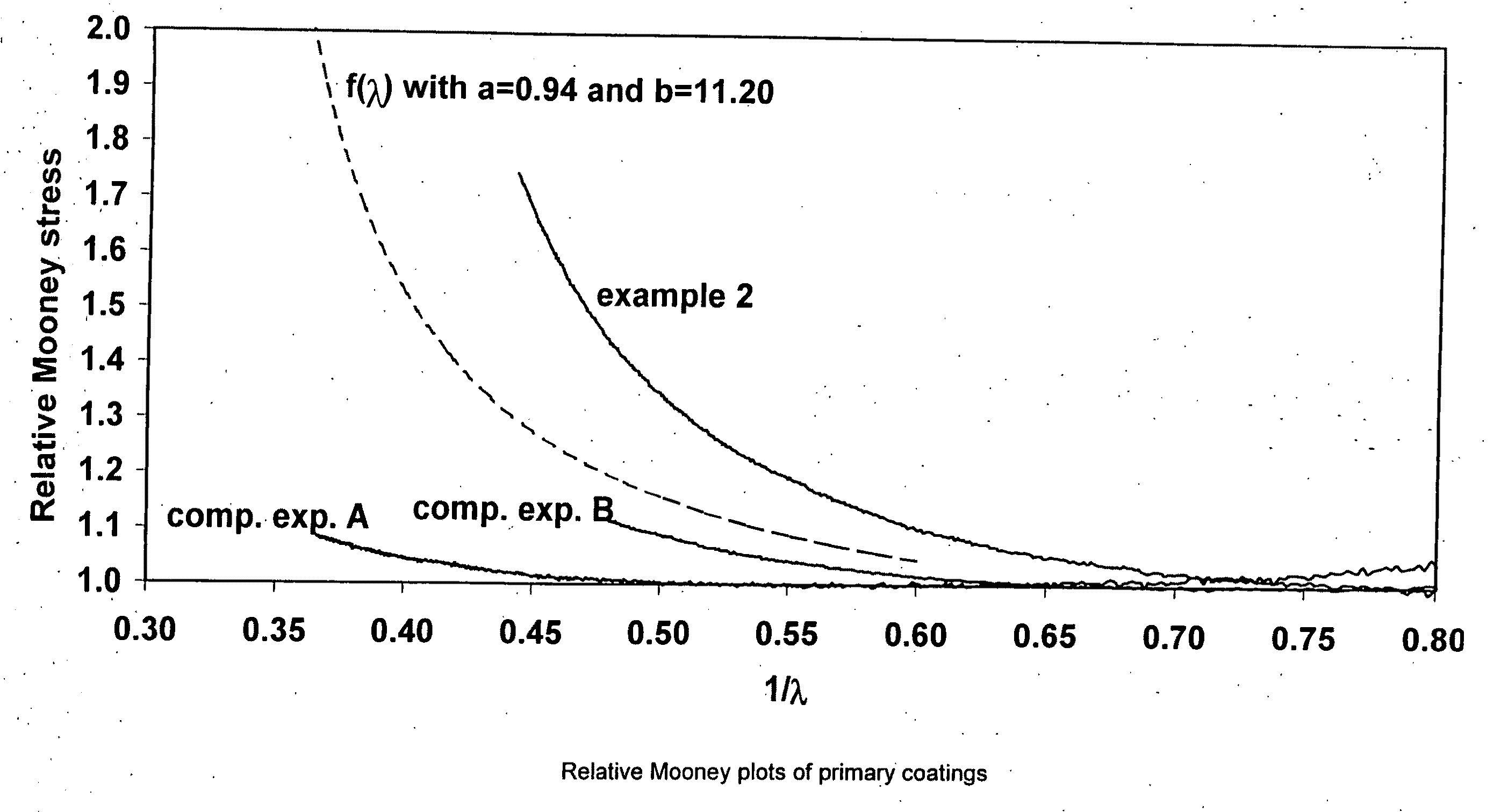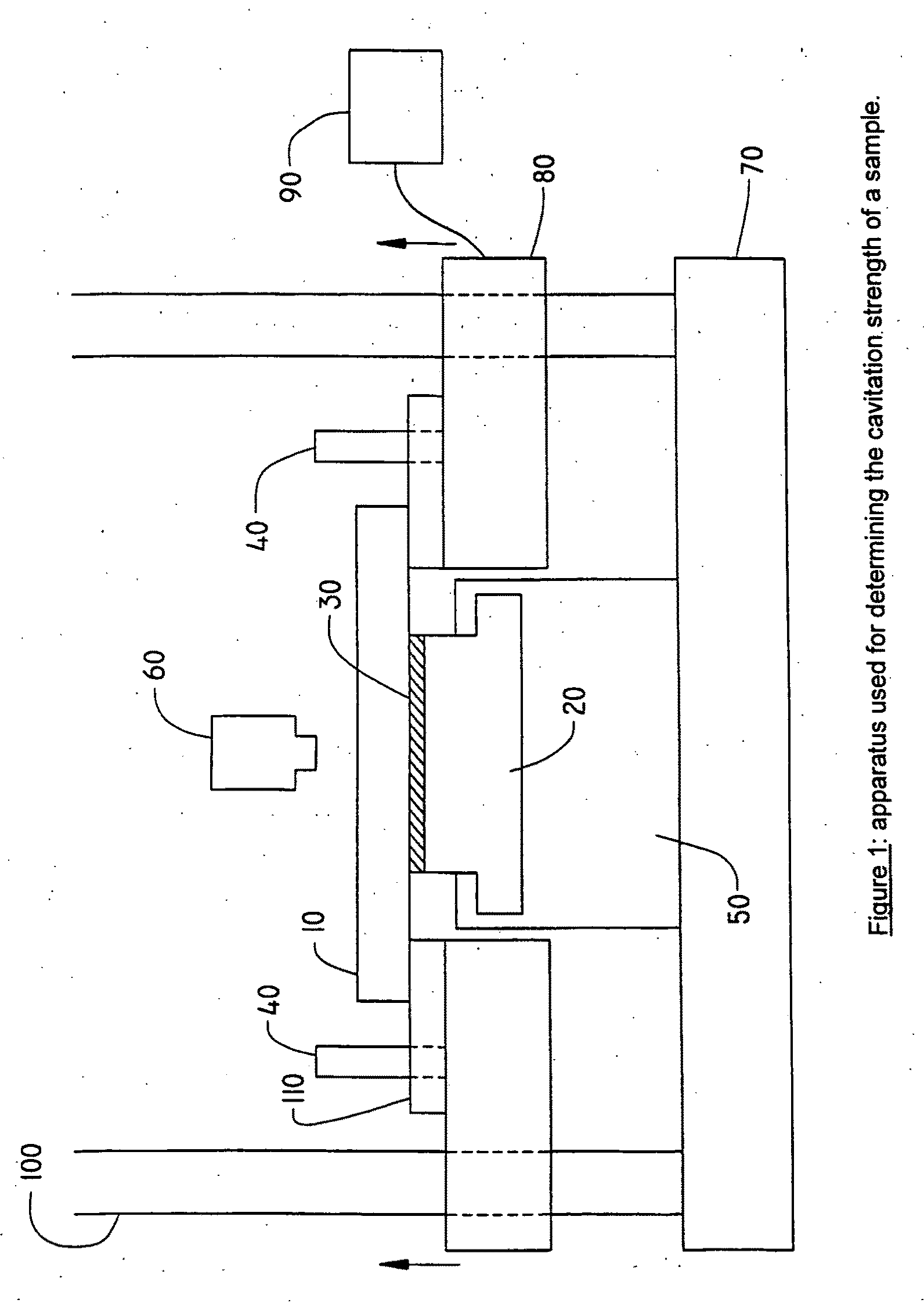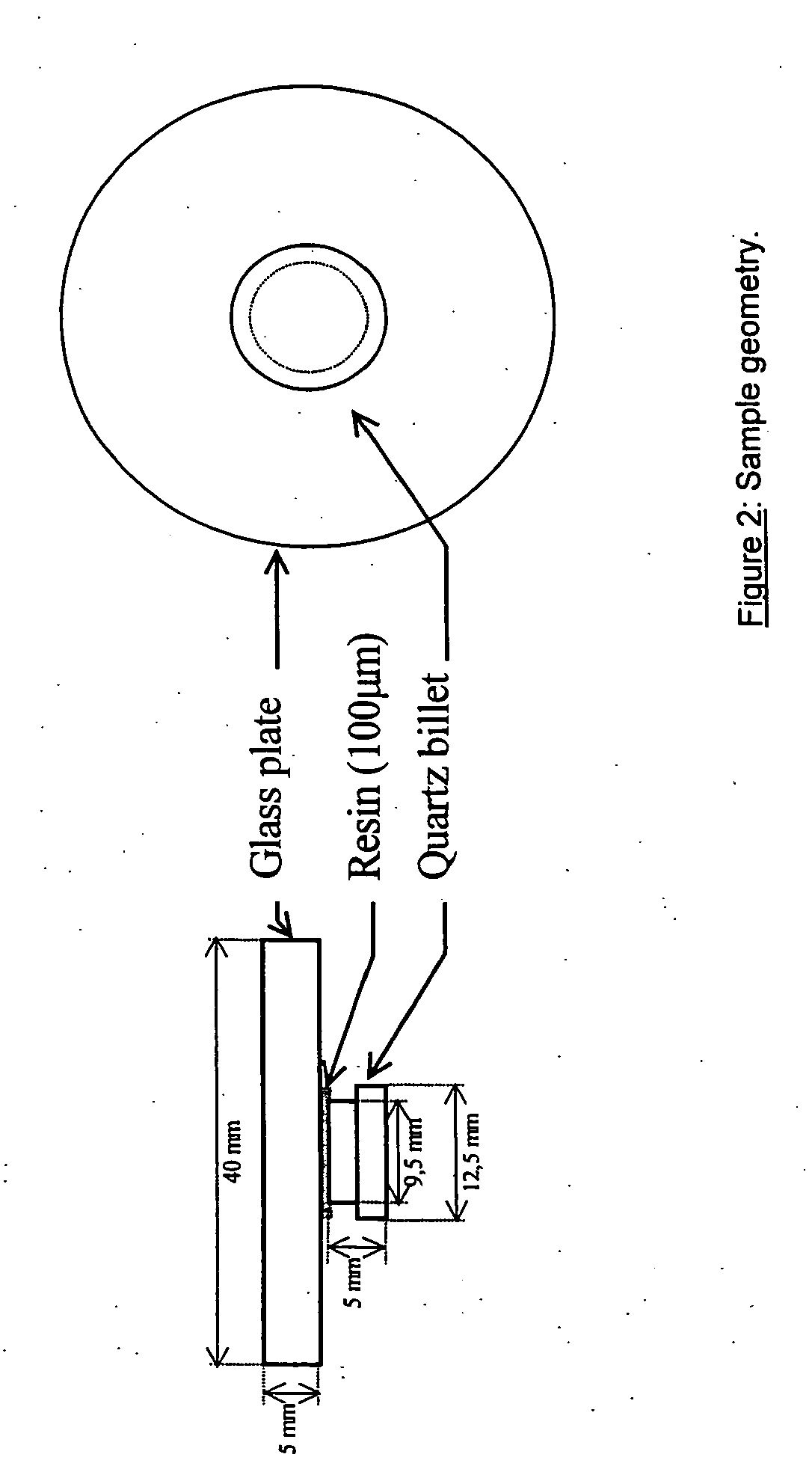Coated optical fibers
a technology of optical fibers and coatings, applied in the direction of glass optical fibres, instruments, force measurement by measuring optical property variation, etc., can solve the problems of reducing the strength of the coating, increasing the transmission loss of the optical fiber, and compromising the integrity of the coating, etc., to achieve a high cavitation strength and low modulus
- Summary
- Abstract
- Description
- Claims
- Application Information
AI Technical Summary
Benefits of technology
Problems solved by technology
Method used
Image
Examples
example 2
[0229]A coating was formulated using 69.7 wt % of a polyether urethane acrylate oligomer having a polyether backbone comprising on average two blocks polypropylene glycol having an average Mw of about 4000 and being end-capped with ethoxy groups (the oligomer is the reaction product of a polyether polyol, toluene diisocyanate and 2-hydroxyethyl acrylate), 20.4 wt % 2-phenoxyethyl acrylate, 6.4 wt % tripropyleneglycoldiacrylate, 2.0 wt. % Lucerin TPO, 0.3 wt % DC190, 0.2 wt % DC57 and 1 wt % mercapto silane.
[0230]The equilibrium modulus was 0.6 MPa. The modulus E′ at 23° C. was 0.7 MPa. The relative Mooney plot is given in FIG. 4. The cavitation strength at the tenth cavity σ10 was measured to be 1.24 MPa after 1 J / cm2 cure (see FIG. 3); the σ10 / E′23 was 1.77; Go=31 J / m2.
example 3
[0231]A primary coating composition was formulated using 38.8 wt % of an aliphatic polyether-polycarbonate based urethane acrylate oligomer having an average Mw of 4000 (the oligomer is derived from 2-hydroxyethylacrylate, isophoronediisocyanate, and equal amounts of polypropyleneglycol diol and a copolymer diol of 10-15 wt % polyether / 85-90 wt % polycarbonate), 48.5 wt % of N butylurethane O ethyl acrylate (CL1039), 9.7 wt. % isodecyl acrylate and 3 wt % of Irgacure 184 photoinitiator.
[0232]The equilibrium modulus is 1.31 MPa. The calculated volumetric thermal expansion coefficient α23 is 6.74×10−4 K−1.
example 4
[0236]A secondary coating composition was formulated using 50 wt. % of an aliphatic polyether based urethane acrylate oligomer (the oligomer is derived from 2-hydroxyethylacrylate, isophorone diisocyanate, and polytetrahydrofuran having Mn of 1000), 32.8 wt. % of 2-hydroxyethylacrylate, 17.2 wt. % of HEA-IPDI-5CC adduct (as described for coating U in Table 1 above) and 1 wt. % of Irgacure 184.
[0237]The calculated α23 is 6.42×10−4 K−1, the rate of polymerization is 2.99 mol / l sec.
PUM
| Property | Measurement | Unit |
|---|---|---|
| thickness | aaaaa | aaaaa |
| thickness | aaaaa | aaaaa |
| tensile strength at break | aaaaa | aaaaa |
Abstract
Description
Claims
Application Information
 Login to View More
Login to View More - R&D Engineer
- R&D Manager
- IP Professional
- Industry Leading Data Capabilities
- Powerful AI technology
- Patent DNA Extraction
Browse by: Latest US Patents, China's latest patents, Technical Efficacy Thesaurus, Application Domain, Technology Topic, Popular Technical Reports.
© 2024 PatSnap. All rights reserved.Legal|Privacy policy|Modern Slavery Act Transparency Statement|Sitemap|About US| Contact US: help@patsnap.com










